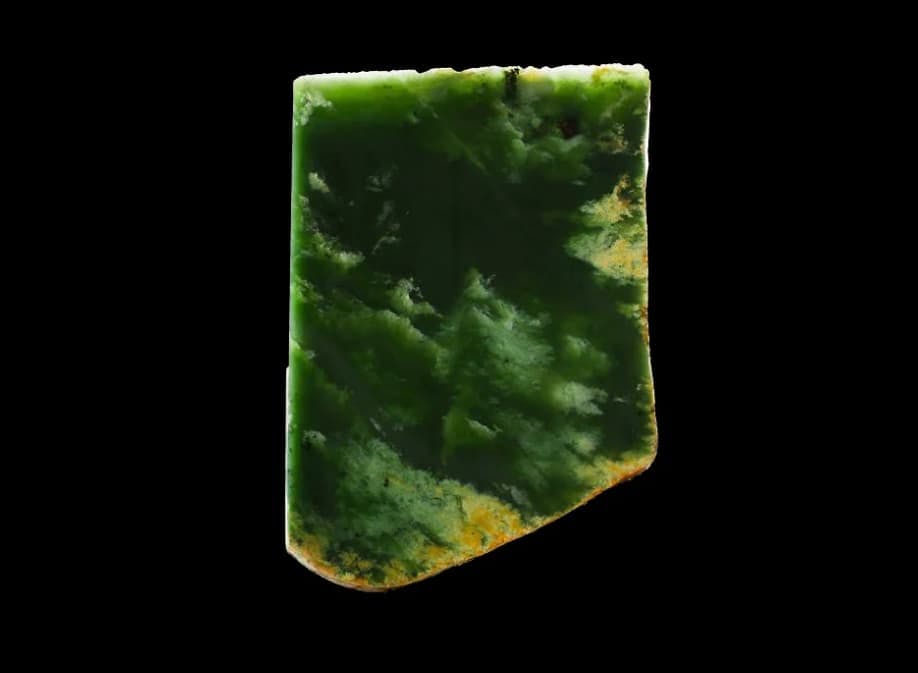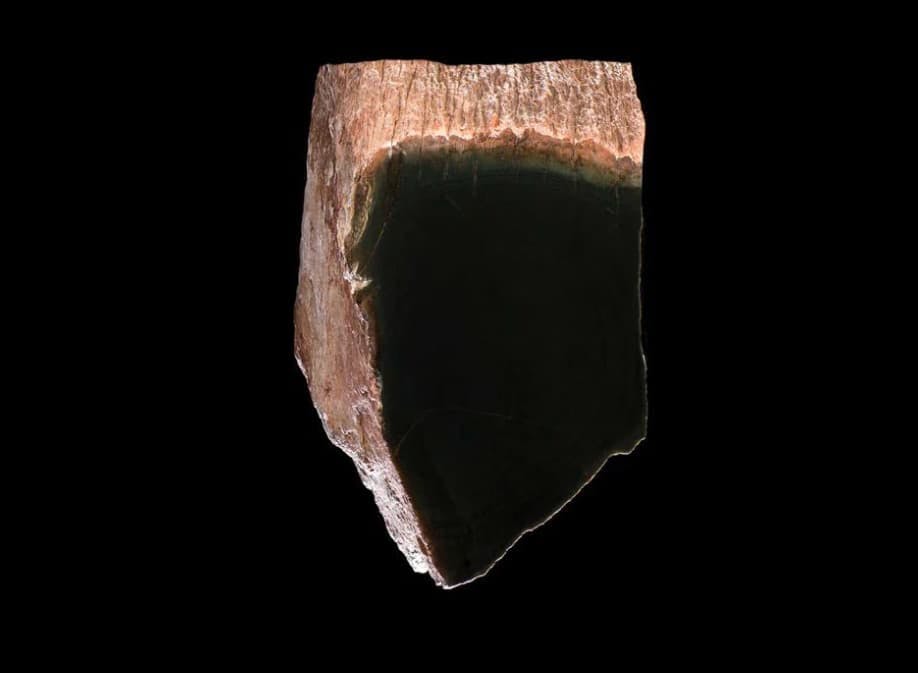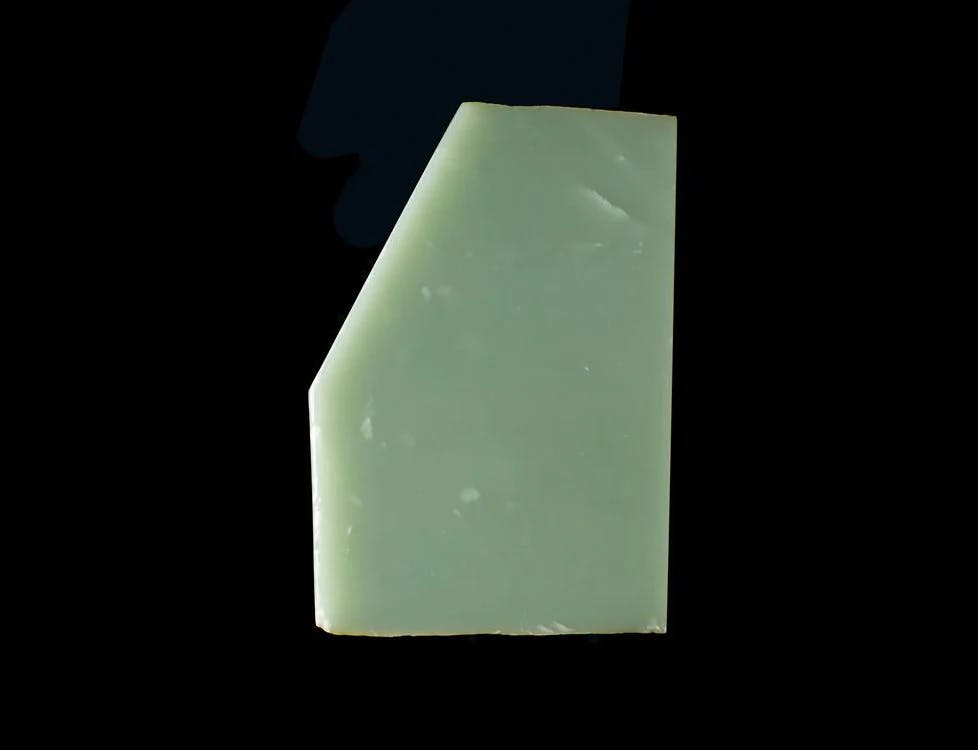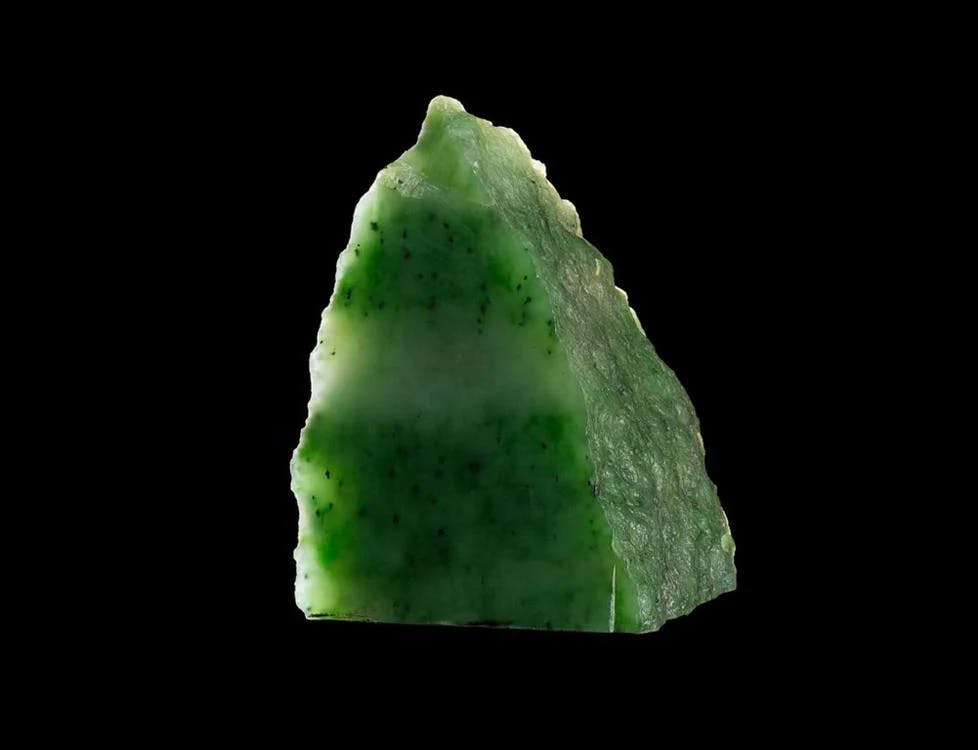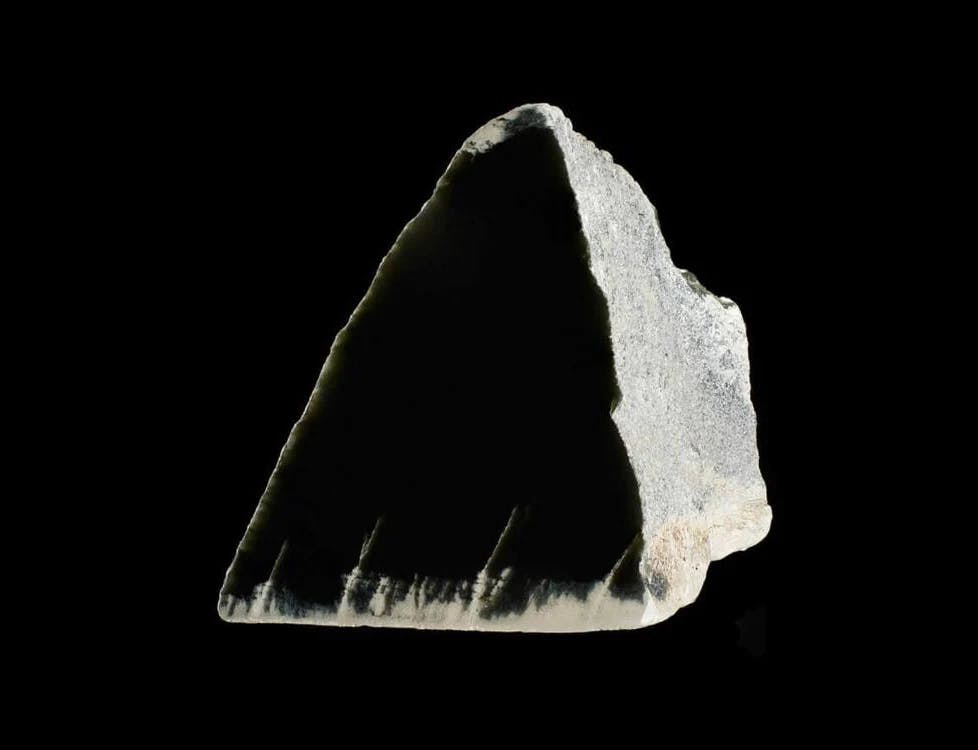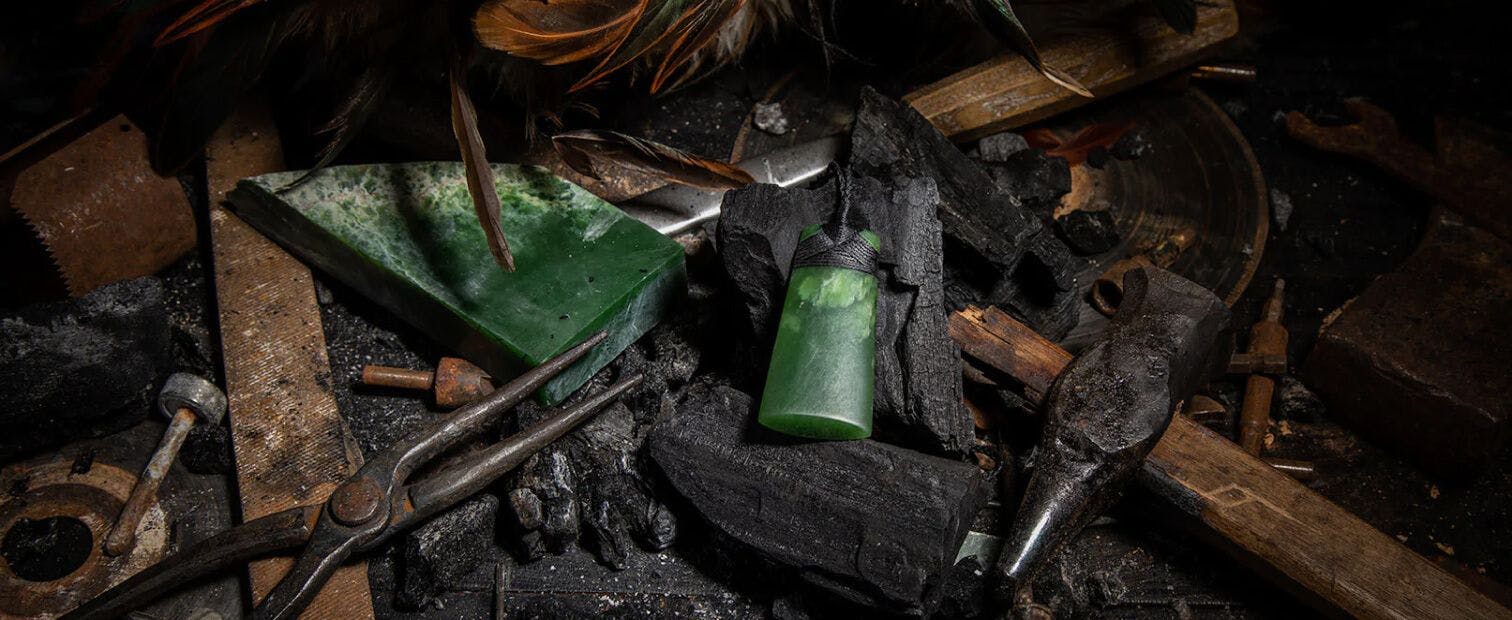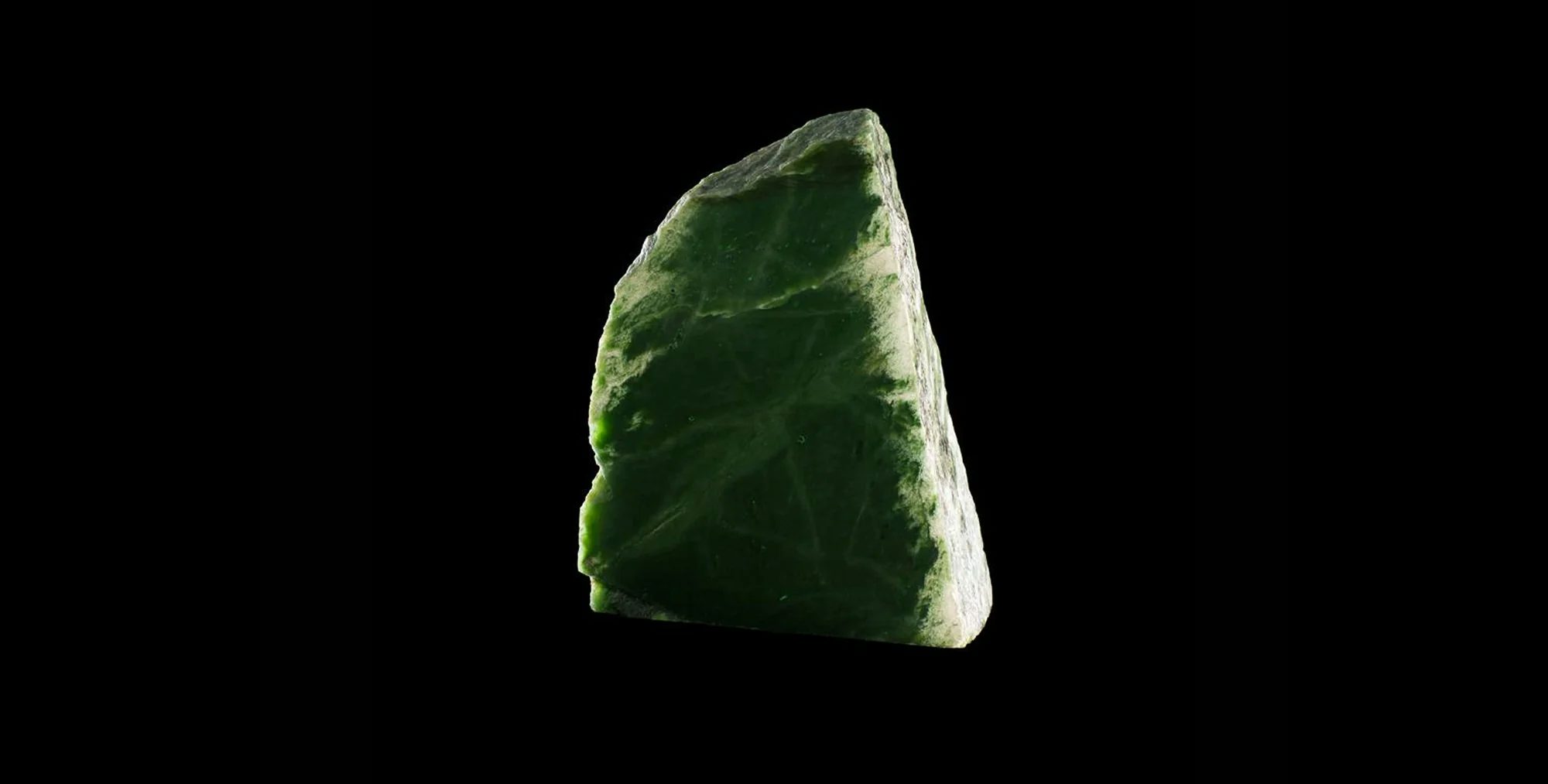
Canadian Jade
The best five percent of this stone is some of the most expensive and sought after in the world
Jade deposits begin in the south near Hope in British Columbia and extend northwest to the Alaskan border in the Yukon territory. The various major occurrences are grouped into several mining areas, such as Lillooet, Omineca, Cassiar, and Yukon Territory, all of which have been, or are, currently mined commercially. Jade from the Cassiar and Yukon mining areas are characterised by light and dark green tones smattered with opaque glassy veins and small black chromite spots due to the prevalence of iron ore. It’s relatively translucent with high grade specimens being among the most translucent in the world. We source most of our Canadian jade from these areas, and love the even carving grain of the material. The best five percent of this stone is some of the most expensive and sought after in the world and we reserve this material for carvings and jewels of only the most innovative design. Canada’s enormous nephrite jade deposits contribute more than 70% of the world’s annual production. Yet, jade mining doesn’t have a high profile in Canada possibly because the mineral-rich country extracts around 60 different resources from the earth including iron, gold, copper, silver, oil, uranium and diamonds.
Canadian jade tells the story of the nation's early settlers. The origin of Canadian jade can be difficult to trace, however it's believed jade deposits were found in British Columbia in the late 1800s. It was gold-hunting Chinese settlers who identified the gem, as it was considered worthless by European miners at the time. Settlers began exporting the stone to international destinations, with commercialisation seeing the value of the jade industry soar. Like New Zealand jade, Canada's indigenous people have a long history with their jade, with Inuit people using the stone to create tools, ornaments and weapons.Adze blades, knives, axes and hammers were all fashioned out of Canadian jade by Inuit people, and over time more people in Canada became interested in the polishable stone, with amateur lapidary booming in the 1940s and 50s.
